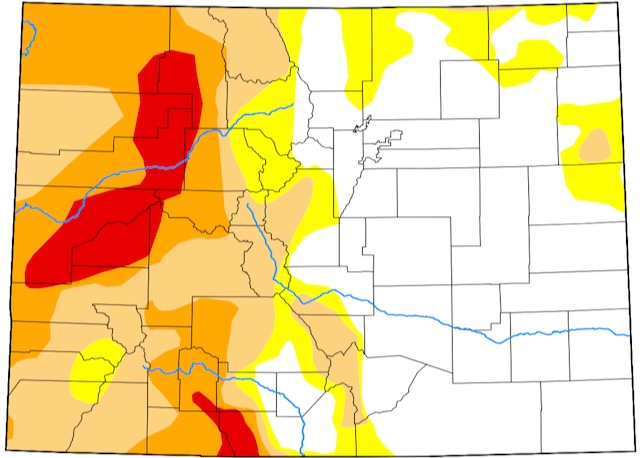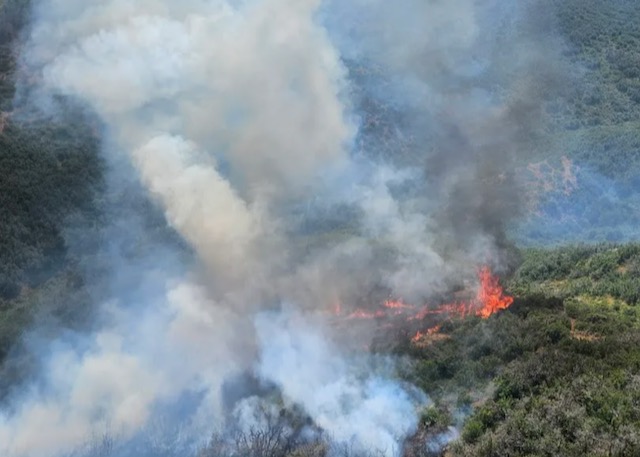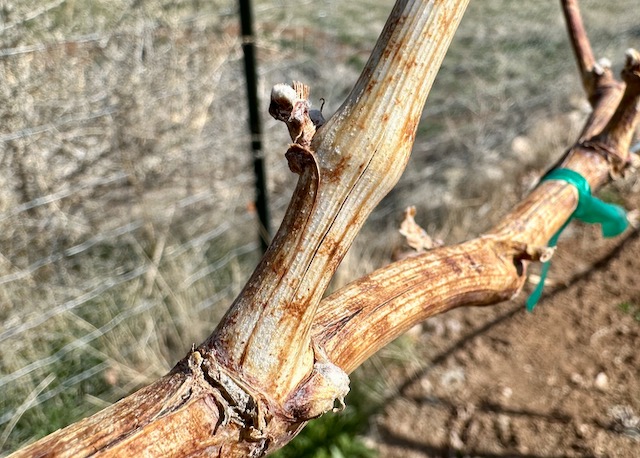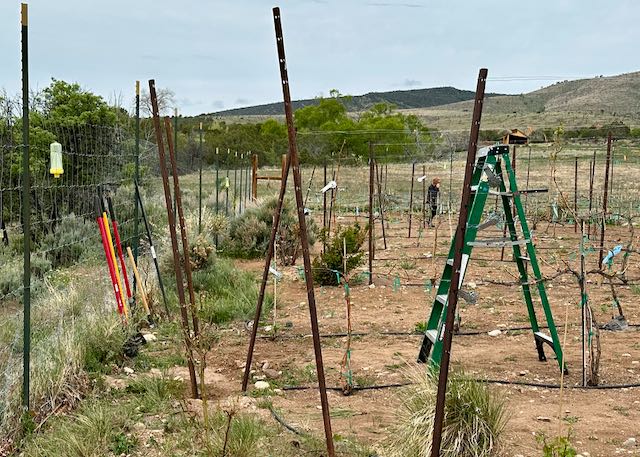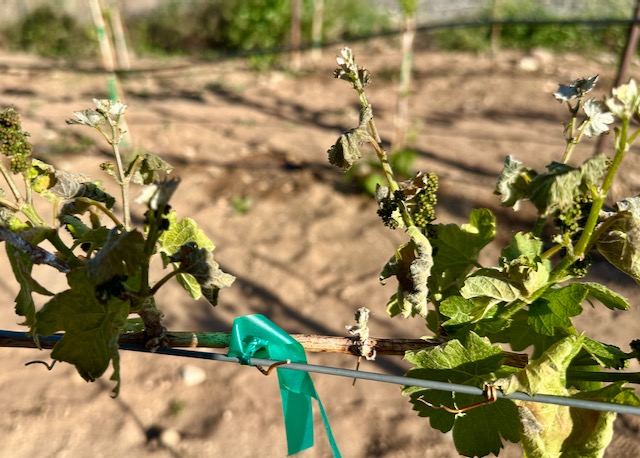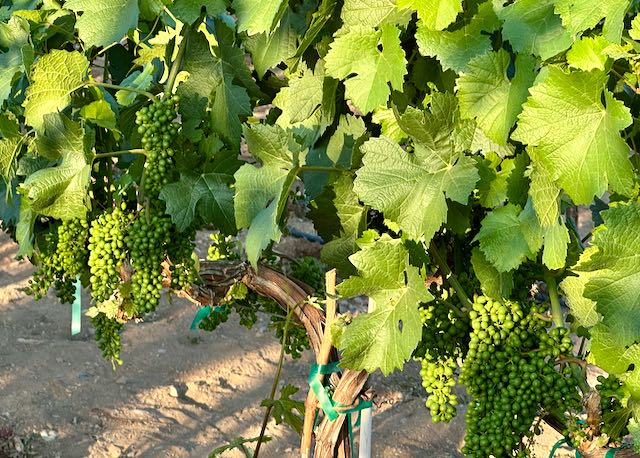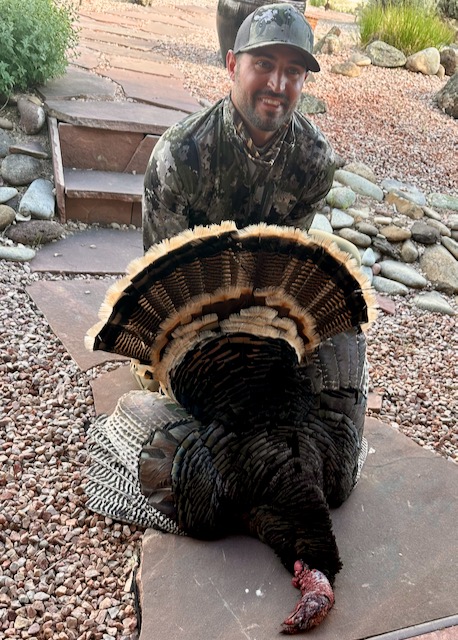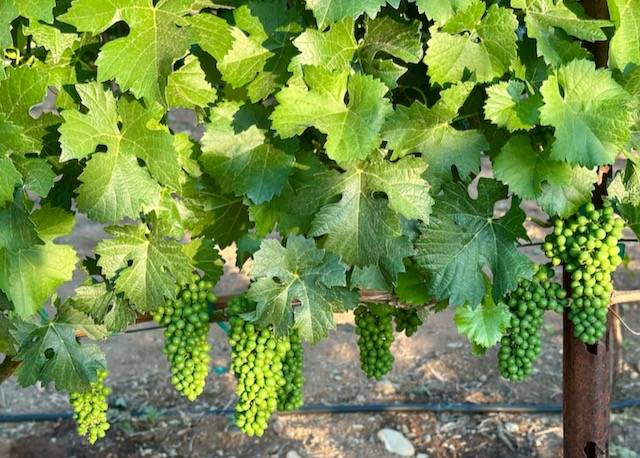
2025 - A Midsummer Night's Dream - Moisture
A midsummer vineyard check in
My apologies to the bard.
We are in need of moisture in the North Fork Valley. The 2025 grape growing season is trending hot, and very dry. Understandably, the “dry” part of that equation might be difficult for eastern flatland lubbers to grasp, especially with the wet start to the season along Colorado’s Front Range.
However, here in western Colorado’s Delta County, we are immersed in extreme drought conditions.
Hazy overnight rain dreams only brings dry, wind driven thunderstorms. The type of storms that in the past few days sparked wildfires in Black Canyon of the Gunnison National Park in neighboring Montrose County. Additional fires have developed rapidly in both Montrose and Grand counties.
Fires are encroaching on Delta.
Hopefully, the existing fires will be contained in the coming days by our diligent and greatly appreciated wildfire crews—and that July’s monsoon season will finally kick in.
So far, the dry conditions haven’t affected vine health. Dry farming—growing vines without irrigation—isn’t viable in western Colorado, and I haven’t tried to buck that reality. That said, the extended drought has definitely changed vineyard maintenance tasks and routines. For example, powdery mildew pressure is down, while pest pressure is up—way up.
Just ask my local grasshoppers, leafhoppers, paper wasps, and yellow jackets.
I’ve already sprayed the vines twice to knock down grasshopper and leafhopper populations. After some research, I found that combining two organic pesticides—PyGanic and Venerate—is especially effective against grasshoppers.
And no, the home remedy of molasses in trays scattered around the vineyard doesn’t work. I tried that two years ago, and the only grasshoppers I caught were the unlucky ones that hopped in by accident.
I also used a non-organic spray—Talstar—in the adjacent field. Walking through the field wielding my battery-powered backpack sprayer, I felt like Moses parting the Red Sea as grasshoppers scattered. Talstar kills on contact within an hour and leaves a residue that lingers on green grasses and weeds, killing insects for up to three months.
I’ll provide an update on the effectiveness of these approaches at the end of the season.
The flip side of our dry and hot conditions is reduced powdery mildew pressure. Even so, I applied Stylet Oil three times between April and the end of June to keep mildew at bay. The first two applications were heavier and earlier than usual because of last season’s above-average precipitation before harvest, which led to mildew proliferation in parts of the vineyard. Although it didn’t degrade the fruit, mildew was clearly visible on the vine cordons.
Dry weather or not, my top priority this season was full eradication of the lingering mildew.
One of my spring vineyard projects involved resetting the vineyard trellis end metal posts in concrete. They were originally pounded into the ground. Over five years, many of the end posts had loosed up, not taking the tension needed to carry the weight of the vine canopies. I was able to complete fifty percent of the rows, next year’s spring should complete the task.
The other spring project I was determined to pursue—long overdue—involved having the soil tested. Results showed high levels of essential nutrients, which likely explains the vigorous vegetative growth I’ve seen since planting.
While robust growth isn’t a bad thing, it keeps me busy pruning. Managing excessive growth is important because it promotes airflow between the upright-growing canes and encourages grape cluster development over foliage.
That said, over-pruning can be counterproductive. Leaves are essential to grape development, playing a critical role in ripening through photosynthesis. On average, 15 to 20 leaves are needed along each upright cane to fully ripen a single cluster.
Speaking of cluster development—it’s going beautifully.
The Pinot Noir is showing especially well. I expect the largest harvest yet from this now five-year-old vineyard. Last year, I harvested 150 pounds. This season, 200 to 250 pounds seems possible.
The Riesling is not doing as well. The two long Riesling rows sit along the edge of that grasshopper-filled field. Winds sweep across the downward-sloping terrain and strike the Riesling vines hard, reducing flower retention and subsequent cluster development. After bud break on May 20, freezing temperatures also flowed in from the field, damaging newly formed leaves and primary buds. That further reduced cluster formation.
Next year, I plan to install a wind barrier running from the ground up to the top of the wildlife fence—about seven feet high. This should help buffer against wind and prevent damage from late-season cold air draining into the vineyard from the adjacent field.
Still, a Riesling harvest will happen—just likely half of what would normally be expected. I’d be thrilled with 75 pounds. Finding locally grown supplemental Riesling or Gewürztraminer grapes is now on my to-do list.
Ultimately, as always, harvest numbers will depend on the predators.
Each year, a new sugar-loving critter tries its luck with the grapes. Last year, it was a raccoon—probably responsible for swiping over 25 pounds of Pinot Noir over a single weekend before I realized what was happening. A baited trap will be set in August. Any masked intruders will be relocated to new surroundings, courtesy of Marshall’s free-haul wildlife services.
I’m also prepared for returning threats like birds and yellow jackets. I use netting to limit bird access. For yellow jackets, I’ve been trapping since April, targeting the queen-producing workers early in the season. As of midseason, only the occasional stray yellow jacket is caught in the 12 traps positioned 10 to 20 yards from the vineyard—just as they were last year, when this method proved highly effective.
It’s already been a busy season—who knows what else Mother Nature has in store.
I’ll make a toast to the bard should my midsummer night dreams drum up some persistent rain in the coming weeks
On a personal familia note, in May my son-in-law Zach and grandson Levi visited in May. Zach helped me reset the trellis end posts, and bagged a large Tom on the property. Levi helped himself to all of the valley’s various playgrounds, and all the strawberry sundaes he could muster.
The new “farm” playground at the Delta County Fairgrounds was his favorite!


